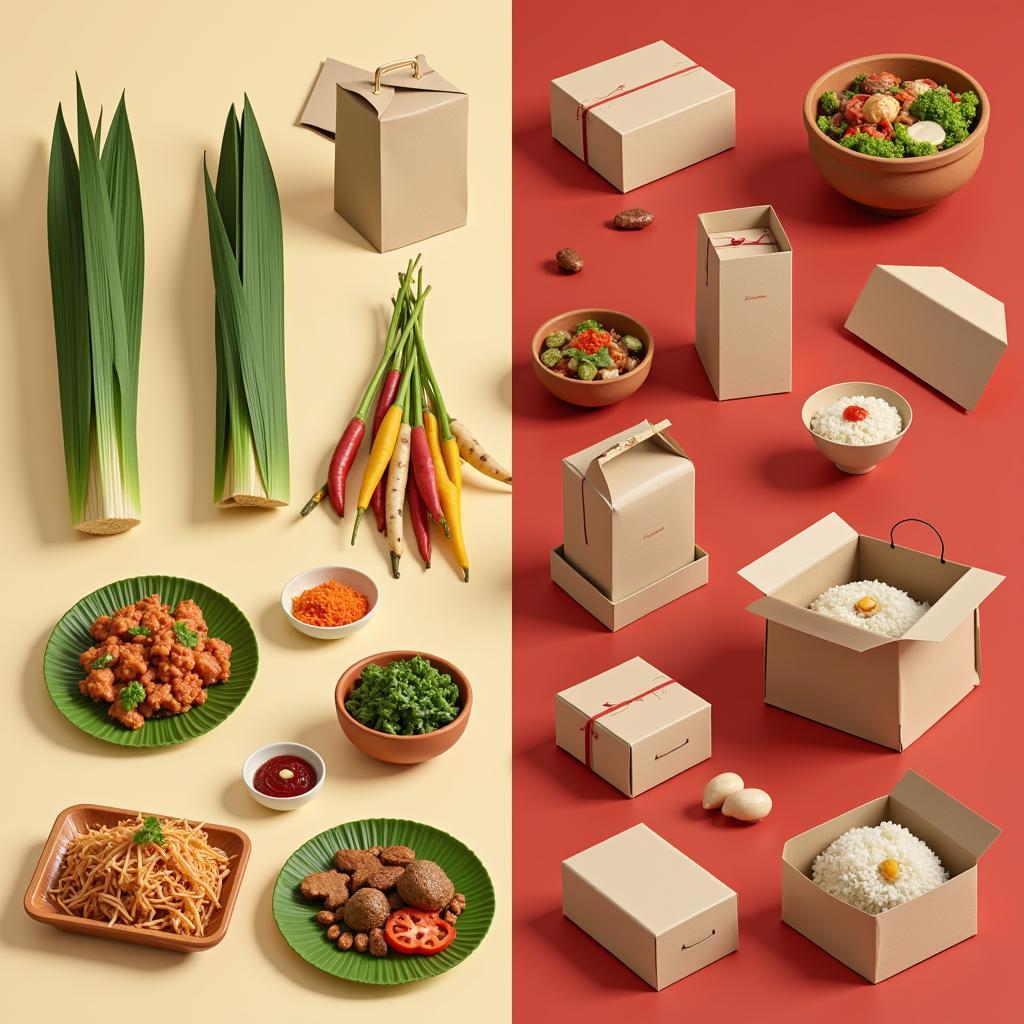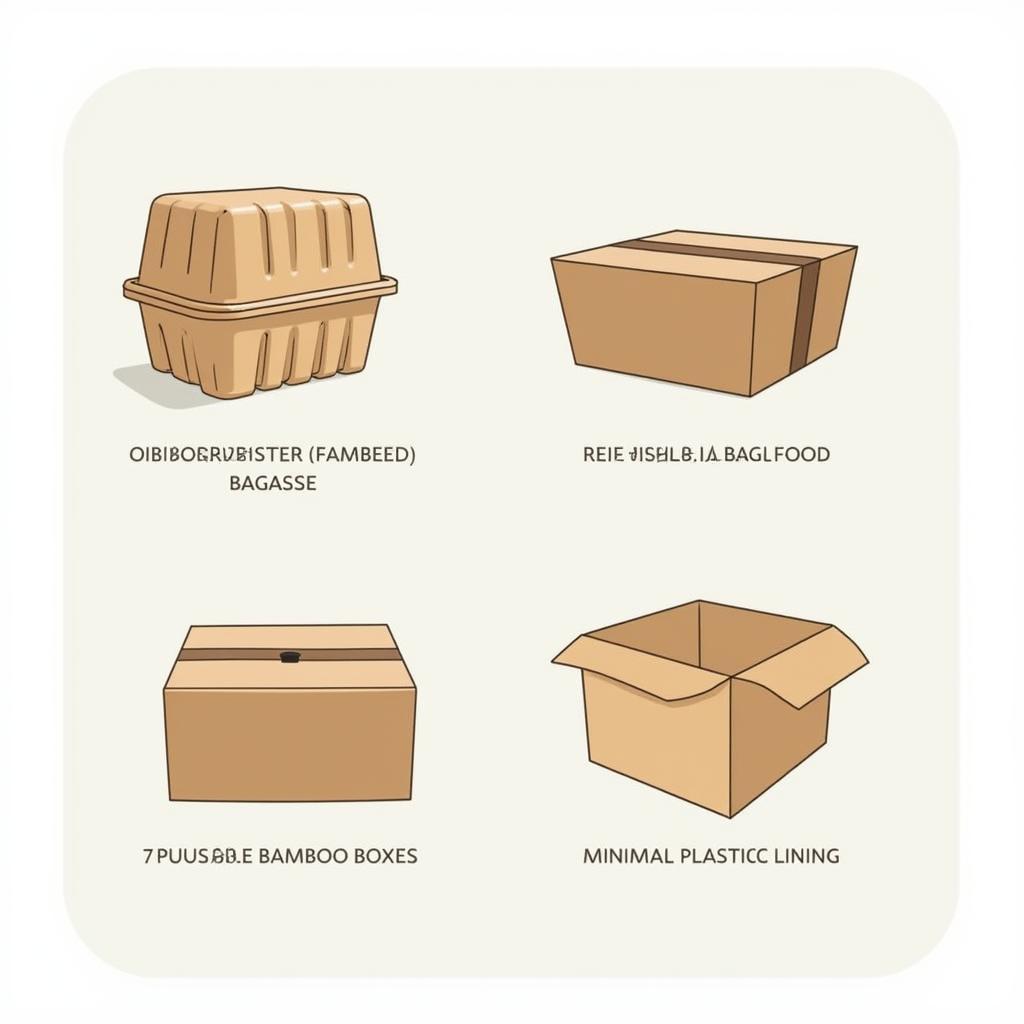Chinese Food Packaging is an essential element of the dining experience, influencing everything from food preservation and presentation to brand identity and environmental impact. It reflects centuries of culinary tradition while constantly evolving to meet the demands of modern consumers. We’ll explore the fascinating world of Chinese food packaging, examining its history, innovations, and impact on both the culinary landscape and our planet. Learn how smart packaging choices can elevate your brand and delight your customers.
A Rich History of Chinese Food Packaging
From simple, functional beginnings to the vibrant and diverse options available today, Chinese food packaging has come a long way. Early methods focused on practicality, using readily available materials like bamboo leaves, lotus leaves, and clay pots to store and transport food. These natural materials offered excellent preservation qualities and added a unique flavor to the dishes. Over time, with the development of paper and printing, more elaborate packaging emerged, incorporating intricate designs and calligraphy that reflected the cultural significance of food in Chinese society. This evolution highlights the continuous blend of tradition and innovation that defines Chinese food packaging. You can explore similar innovative solutions for your own restaurant with our custom Chinese food boxes.
 Traditional vs. Modern Chinese Food Packaging
Traditional vs. Modern Chinese Food Packaging
The Modern Landscape of Chinese Food Packaging
Today’s Chinese food packaging faces new challenges and opportunities. The rise of takeout and delivery services demands packaging that is both functional and aesthetically pleasing. Considerations like leak-proof designs, temperature control, and convenient portability are paramount. Furthermore, growing environmental consciousness has pushed for sustainable packaging solutions, from biodegradable materials to reusable containers. This shift towards eco-friendly practices reflects a growing awareness of the environmental impact of disposable packaging. The industry is also embracing innovative materials and technologies, creating packaging that enhances the customer experience while minimizing its environmental footprint.
 Eco-Friendly Chinese Food Packaging Solutions
Eco-Friendly Chinese Food Packaging Solutions
Key Considerations for Choosing the Right Packaging
Selecting the appropriate Chinese food packaging requires careful consideration of various factors. What type of cuisine are you serving? Delicate dim sum requires different packaging than hearty noodle dishes. How will the food be transported? Is it for takeout, delivery, or dine-in? The packaging must maintain the food’s temperature and prevent spills. Branding is also crucial. Your packaging should reflect your restaurant’s identity and appeal to your target audience. Don’t forget to check out our range of food containers for restaurants for a wider selection of options.
What are the different materials used in Chinese food packaging?
Common materials include plastic, cardboard, paper, and biodegradable options like sugarcane bagasse. Each material has its pros and cons in terms of cost, durability, and environmental impact.
How can I make my Chinese food packaging more sustainable?
Opt for eco-friendly materials, reduce packaging waste, and consider reusable containers. Explore options like waxed paper bags for food to enhance your sustainability efforts.
The Future of Chinese Food Packaging
The future of Chinese food packaging is bright, driven by innovation and a commitment to sustainability. Expect to see more smart packaging solutions that incorporate technology to enhance food freshness and track deliveries. Biodegradable and compostable materials will become increasingly prevalent as consumers demand eco-conscious choices. The industry is also exploring personalized packaging options and interactive designs that further engage customers. For unique and memorable packaging ideas, explore our selection of food experience gifts. You might also want to look at options for securely packaging your food for delivery with our parcel food solutions.
Conclusion
Chinese food packaging plays a crucial role in preserving culinary traditions, enhancing the dining experience, and promoting sustainability. By understanding the evolving landscape of this industry, restaurants can make informed decisions about their packaging choices, benefiting both their business and the environment. Choosing the right Chinese food packaging is an investment in your brand and a testament to your commitment to quality and sustainability.
FAQ
- What are the most common types of Chinese food packaging?
- How can I choose the right packaging for my Chinese restaurant?
- What are the benefits of using sustainable Chinese food packaging?
- What are the latest trends in Chinese food packaging?
- Where can I find high-quality Chinese food packaging suppliers?
- What are the regulations regarding food packaging safety in China?
- How can I customize my Chinese food packaging?
Situations Commonly Asked
- Takeout and delivery: How to ensure leak-proof and temperature-maintained packaging for various dishes?
- Catering events: What are the best packaging options for large quantities of food while preserving presentation?
- Branding and marketing: How to utilize packaging to reinforce brand identity and attract customers?
- Sustainability: How to minimize environmental impact through eco-friendly packaging choices?
Suggested Further Reading and Questions
- Explore articles about the history and cultural significance of Chinese food presentation.
- Learn more about the latest innovations in food packaging technology.
- Research different types of biodegradable and compostable materials.
- Consider the impact of packaging on consumer behavior and purchasing decisions.
Need assistance? Contact us at Phone Number: 02437655121, Email: minacones@gmail.com Or visit us at: 3PGH+8R9, ĐT70A, thôn Trung, Bắc Từ Liêm, Hà Nội, Việt Nam. We have a 24/7 customer support team.